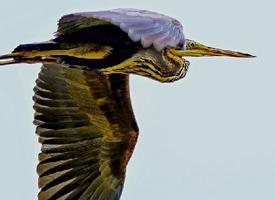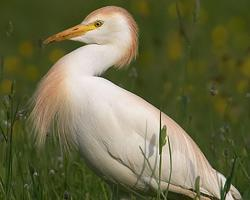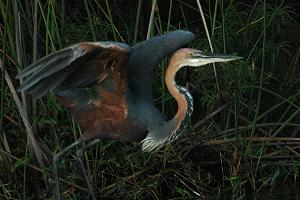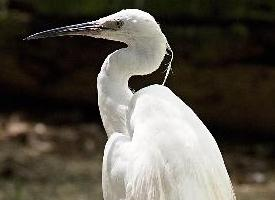
Poids et mesures
| Longueur | de 80 à 90 cm |
|---|---|
| Envergure des ailes | de 120 à 150 cm |
Statut de conservation
| Intrépide |
Description de l'animal
The Purple Heron (Ardea purpurea) is a captivating bird species belonging to the heron family, Ardeidae. Renowned for its striking plumage and elusive nature, this bird is a sight to behold in its natural habitat. The Purple Heron is distinguished by its slender frame, long neck, and legs, which facilitate its stealthy movement through shallow waters in search of prey. Its size is considerable, with adults reaching lengths of up to 90 centimeters (35 inches) and boasting wingspans that can extend to about 150 centimeters (59 inches).One of the most remarkable features of the Purple Heron is its vibrant plumage. As the name suggests, the bird exhibits various shades of purples and grays, intermingled with chestnut and maroon, especially around the neck and lower back. The head is adorned with a black cap, and the eyes peer out with a sharp gaze, accented by a striking yellow color. Juveniles display a duller color palette, with more extensive brownish tones, which gradually mature into the adult's rich hues.
The Purple Heron's habitat is predominantly freshwater environments, including marshes, swamps, and the dense reed beds of lakes, rivers, and ponds across its range. It exhibits a preference for areas with ample vegetation, providing cover for nesting and hunting. The bird's distribution is widespread, encompassing parts of Europe, Asia, and Africa, with migratory populations moving to warmer regions during the winter months.
Dietarily, the Purple Heron is a skilled hunter, primarily feeding on a diet of fish, amphibians, small mammals, and insects. It employs a patient hunting strategy, standing motionless or walking slowly to ambush prey, using its sharp bill to capture and consume its catch.
Breeding behavior of the Purple Heron is as secretive as its daily life. Nests are often hidden within dense reed beds or in trees close to water. These structures are constructed from twigs and reeds, forming a platform where the female lays between 4 to 5 eggs. Both parents partake in the incubation process, which lasts about 27 days. The chicks are altricial at birth, relying entirely on their parents for food and protection until they fledge approximately two months later.
Despite its beauty and intrigue, the Purple Heron faces threats from habitat destruction and pollution. Wetland drainage for agriculture, urban development, and water pollution are significant challenges to the survival of this species. Conservation efforts are underway in various parts of its range to protect the habitats crucial for the feeding and breeding of the Purple Heron.
In summary, the Purple Heron is a magnificent bird that captures the essence of wetland ecosystems. Its distinctive appearance, combined with its elusive nature, makes it a fascinating subject for bird watchers and nature enthusiasts. However, the preservation of its habitat is vital for ensuring that future generations can continue to marvel at this splendid avian species.
Animaux similaires
Nouvelles photos d'animaux
Top 10 des animaux
- Dolphin gull (Leucophaeus scoresbii)
- Diana monkey (Cercopithecus diana)
- Moustached guenon (Cercopithecus cephus)
- Galápagos tortoise (Geochelone nigra complex)
- Stone loach (Barbatula barbatula)
- Japanese macaque (Macaca fuscata)
- Russian tortoise (Testudo horsfieldii)
- Greek tortoise (Testudo graeca)
- Common flying dragon (Draco volans)
- Vendace (Coregonus albula)


